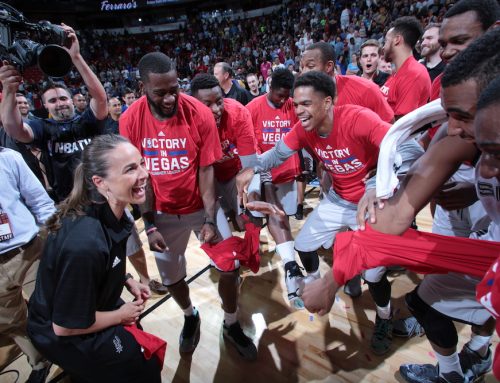By John Lombardo,  via Sports Business Daily
Team profitability is on the rise in the NBA, fueled by a projected $200 million in revenue sharing among the clubs this year.
Total league revenue for 2012-13 is expected to reach $5 billion, according to league estimates, up from about $4.2 billion for the lockout-shortened 2011-12 campaign. It is expected that 22 of the league’s 30 teams will make money this year, up from 18 clubs last season, which was the first year operating under the NBA’s new 10-year collective-bargaining agreement and with the installation of its new revenue-sharing system.
For the 2010-11 season, prior to the new CBA and revenue-sharing plan, eight teams were profitable.
The revamped revenue-sharing system complements the larger, long-standing process in the NBA of teams sharing league-level revenue, including money from national television contracts, leaguewide sponsorships and international deals. The intent of the new system is to better aid the league’s smaller-market clubs financially relative to its large-market teams, which can generate higher revenue from local TV and sponsorship deals.
Typically, the NBA completes its team financial audits in September and distributes the reallocated revenue to clubs by early February of the following year, though for accounting purposes any revenue sharing is counted on the books for that past season, according to one team source. That means the league and clubs are in the process of finalizing the money that will be redistributed from the 2011-12 season.
According to projections, 15 clubs (half of the league’s teams) will be “recipients†of $104 million in additional revenue sharing from the 2011-12 season, with up to another $15 million from what’s called a “discretionary fund†also being shared — for a total of up to $119 million being shared. The discretionary fund is the result of money generated mainly from postseason dollars.
That amount compares to $54.5 million, shared among 12 teams, following the 2010-11 season — or, the amount that resulted from the league’s prior revenue-sharing system, before the system that’s in place now was initiated.
According to the new revenue-sharing formula, 10 of the league’s teams for the 2011-12 season are expected to be “contributors†to the system, while five clubs will be neither recipients nor contributors. The league has not shared specific team projections for this new, 2012-13 season with owners, but the team splits are expected to be roughly the same as for the 2011-12 season: 15 recipients, 10 contributors, and five clubs in between. The amount shared, however, is expected to increase to a projected $200 million compared with the lower amount for the lockout-shortened 2011-12 season.
Owners last year received a snapshot of a projected fully funded revenue-sharing system being in place for the 2013-14 season and what that system could mean for individual clubs (see box). Those numbers, considered rough estimates, ultimately could vary based on each team’s subsequent business performance.
When the formula was unveiled last year, $200 million was noted as the projected maximum amount to be shared among the clubs according to the new system.
“Ultimately, it is about competitive balance,†said Fred Whitfield, president of the Charlotte Bobcats. “Revenue sharing helps address the natural disparities between large- and small-market teams.
According to the new, widely expanded revenue-sharing plan, each team puts into a pool roughly 50 percent of its total annual revenue, minus certain expenses such as arena operating costs. Teams then receive an allocation from the pool that is equal to the average team payroll for the season.
So, if a team’s contribution to the pool is less than the league’s average team payroll, that team is considered a revenue recipient. If a team’s contribution to the pool is more than the average team payroll amount, the team is deemed a contributor to the system.
Teams are assumed to have achieved certain revenue thresholds based on market size when calculating the full revenue results. Teams that are payers into the revenue-sharing system also are protected to where their contributions to the plan will be no more than 30 percent of their total operating profits.
Under the old system, the maximum payout for any one club was about $5.4 million.



